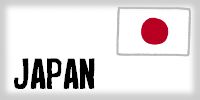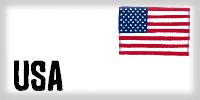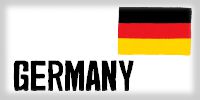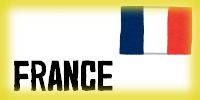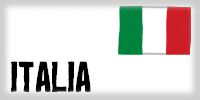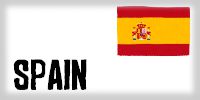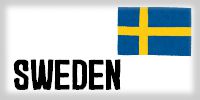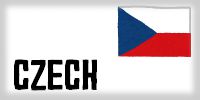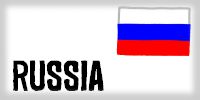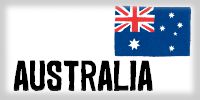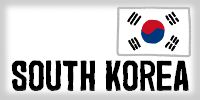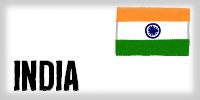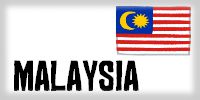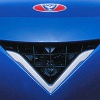ALPINE
|
 |
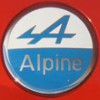 |
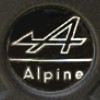 |
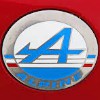 |
 |
|
1958~
|
1962~
|
1971~
|
1991~
|
2017~
|
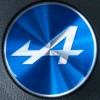 |
|
|
|
|
|
2017~
|
|
|
|
|
【 Origin of Emblem and Logo 】
The ALPINE emblem logo consists of a left arrow and the initial "A" of the company name ALPINE.
【 History of Emblem, Logo, and Company 】
ALPINE was founded in Dieppe, Normandy in 1955 by the Frenchman Jean Rédélé, the racing driver and the owner of the Renault dealer. Rédélé gained class wins in many race events such as the Mille Miglia and Coupe des Alpes with a modified Renault 4CV. With this victory as the starting point, Rédélé designed the ALPINE corporate logo in 1954 and founded the company. However, this logo was not immediately used as a vehicle emblem logo.
In 1956, mass production of the A106 began. This car is ALPINE's first mass-produced car, but its emblem logo has a design with the French land and Renault diamond inside a red shield.
In 1958, the A108 was the first to adopt the ALPINE emblem logo. The design is a combination of a silver-plated "A" and a left arrow, and is attached on the side of the front fender of A108.
In 1962, a round ALPINE emblem logo with a white and blue background was attached to the center of the steering wheel of the A110. Also, it was attached on the center of the front bumper in GTA from 1984.
In 1971, the steering wheel of the A310 was first equipped with a black background emblem logo, but the black background design was no longer adopted.
In 1991, a new design emblem logo with a tricolor pattern like the French flag was born and attached to the front bumper of the A610. After that, when the mass production of A610 was completed in 1995, the brand temporarily disappeared. Then the company forced to focus on manufacturing Renault cars for some time.
In 2012, Renault CEO Carlos Ghosn announced the resurrection of ALPINE. In 2017, the brand and A110 were revived, with a newly designed emblem logo on the fenders and steering wheel.
【 Origin of Car name 】
The number of A106 is derived from the model number R1062 of 4CV which is the base car of A106.
The A108 is based on the Dauphine, whose model number is R1090. According to the naming rule, the car name should be A109, but for some reason it is A108.
The number of A110 is derived from the model number R1110 of R8 which is the base car of A110.
|
BUGATTI
|
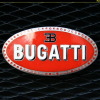
|
|
|
|
|
|
1909~
|
|
|
|
|
【 History and origin of Emblem and Logo 】
The BUGATTI emblem logo depicts the letters BUGATTI in a red oval, and the stylized letters EB above it is derived from the initials of the founder ETTORE BUGATTI.
There are two theories about why there are sixty dots around the edge. The 1st theory is that the sixty dots are derived from the pearls that symbolize luxury and pays honor to Carlo, the father of Ettore Bugatti, a professional designer of jewel products and created an elegant carved furniture. The 2nd theory is that the sixty dots are derived from the safety wires. The wires were used in early automobile manufacturing to prevent loosening of fastener parts such as bolts.
Unlike many other car manufacturers that have changed their emblem logos throughout the course of their company’s history, BUGATTI has retained the exact same design since the company was first founded in 1909.
【 History of Company and Brand 】
The founder Ettore Bugatti was born in Milan, Italy, and the automobile company Automobiles Ettore Bugatti was founded in 1909 in Molsheim. Molsheim, located in the Alsace region, was part of the German Empire from 1871 to 1919, but is now a French commune.
Tragically, the founder Ettore Bugatti died in 1947 and, because Ettore's son Jean died during in a test driving of the Bugatti Type 57 in 1939, there was no heir to the company. As a result, despite several revival attempts, Automobiles Ettore Bugatti ceased production of its automobiles for several decades.
The company was eventually purchased in 1987 by an Italian entrepreneur Romano Artioli and Bugatti Automobili SpA was founded. Then, the company is owned by the Volkswagen group from 1998.
|
|
CITROËN
|
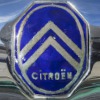 |
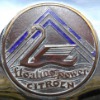 |
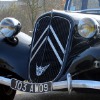 |
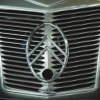 |
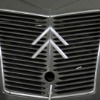 |
|
1919~
|
1932~
|
1932~
|
1948~
|
1953~
|
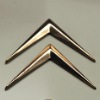 |
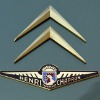 |
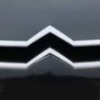 |
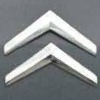 |
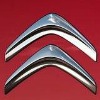 |
|
1955~
|
1958~
|
2004~
|
2004~
|
2009~
|
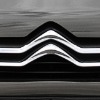 |
|
|
|
|
|
2010~
|
|
|
|
|
【 Origin of Emblem and Logo 】
The CITROËN emblem logo "double chevron" is derived from the shape of the contact surface which the helical toothed gears with V-shaped grooves mesh with each other.
The origin of the emblem logo design was traced back to a trip made by the 22-year-old André-Gustave Citroën to Łódź city, Poland in 1900. At the Łódź city, he visited family and met his brother-in-law. One of brother's clients has a small mechanical firm in Głowno, had developed a process for cutting wooden gears in the shape of a chevron. He wanted to apply the process to metalworking, and bought a patent for the manufacturing process that the Russians had at the time. He laid the foundation for the production of the helical toothed gears, and in 1919 merged with the automobile company Mors to establish CITROËN. Early CITROËN cars used a helical toothed gear in final drive of the rear axle.
【 History of Emblem and Logo 】
CITROËN had a number of different emblem logos throughout the history, but the double chevron is always used.
In 1919, the first emblem logo was born at the same time as CITROËN was established. In this generation, the double chevron was placed in a circle with a blue background.
In 1932, two types of the designs appeared, one of which depicts a swan floating on the water. This design was intended to appeal to the floating engine, which is the new engine mount structure adopted for the new Rosalie. The background of the swan looks like a mountain, but it is actually the double chevron. This is the first time that the graphic and the promotional word have been dispicted on the Citroën emblem logo. Another design that appeared in the same year is a large double chevron mounted on a radiator grill.
In the 1950s, the double chevron with a shape similar to modern design was attached on the hood and trunk.
In 1958, DS Coupe Le Paris was attached with the Henri Chapron emblem logo in addition to the double chevron. This emblem logo indicates that the vehicle was designed by French car manufacturer Henri Chapron. Citroën had no plans to manufacture DS's coupe or convertible, instead Henri Chapron manufactured those models.
In 2004, the design concept was greatly revised, with the double chevron was integrated with the front grille line, and the double chevron with wider and thicker was attached on the rear side. Since 2009, the edges of the double chevron have been further trimmed and rounded.
【 History of Company and Brand 】
CITROËN is known as an automobile company that actively adopts advanced technology. For example, the front-wheel drive system, Unibody, and new suspension system mounted in Traction Avant from 1934, and the hydropneumatic self-levelling suspension system mounted in DS from 1955, and so on.
The headquarters of CITROËN are in Paris, France. The company has been under the umbrella of Michelin since 1934, Peugeot (PSA Group) since 1976, and Stellantis N.V. since 2021.
|
DS AUTOMOBILES
|
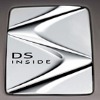
|
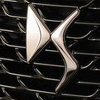
|
|
|
|
|
2009~
|
2015~
|
|
|
|
【 Origin of Emblem and Logo 】
The DS AUTOMOBILES emblem logo was designed based on the "DS" of the brand name.
【 History of Brand 】
DS AUTOMOBILES is a luxury car brand of the Stellantis N.V. Group. The brand was originally launched in 2009 as a luxury sub-brand of Citroën and became independent of Citroën in 2015.
|
PEUGEOT
|
 |
 |
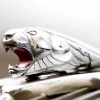 |
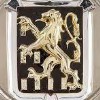 |
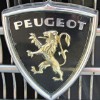 |
|
1905~
|
1923~
|
1933~
|
1948~
|
1955~
|
 |
 |
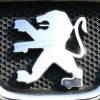 |
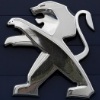 |
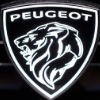 |
|
1960~
|
1975~
|
1998~
|
2012~
|
2021~
|
【 History and origin of Emblem and Logo 】
The PEUGEOT emblem logo features a lion. The history and origin of this lion begins in 1810, when PEUGEOT was founded. The company at that time did not manufacture automobiles, but manufactured saw products, umbrella frames, coffee grinders, and so on. Based on the lion created by the engraver Justin Blazer, the first lion emblem logo was born in 1847 and registered as a trademark in 1858. This design expressed and symbolised the toughness of sawtooth like the lion's tooth, the flexibility of blade like the lion's spine, the strength and cutting speed of steel like the bounding lion.
In 1905, for the first time, the grille of a PEUGEOT car was adorned with a lion walking on an arrow. For some time after that, the various shapes of the three-dimensional lion mascots were displayed on the radiator grill. The standing lion was adopted for the emblem logo from 1948, and the first standing lion was depicted in the coat of arms. This emblem logo is derived from the coat of arms and flags of the Franche-Comté. In 1960, the lion profile was depicted on the entire surface of the emblem logo. Then, in 1975, the standing lion was revived with a sophisticated contour design known as "Lion fil". In 2021, the lion's profile on the entire surface of the emblem logo was revived.
【 History of Company and Brand 】
In 1810, Jean-Pierre Peugeot's two sons, Jean-Pierre II Peugeot and Jean-Frédéric Peugeot founded PEUGEOT Frères at the place called "Sous-Cratet" on the commune of Hérimoncourt. Initially The company PEUGEOT Frères was a steel mill, producing a variety of metal products. In 1889, Jean Pierre Peugeot's grandson Armand Peugeot collaborated with the steam expert Léon Serpollet to make the first PEUGEOT "Type 1" steam-powered three wheeler. The following year, Armand made the Peugeot "Type 2" quadricycle with the Daimler petrol engine.
In 1929, PEUGEOT unveiled its first mass-produced car, the 201. This was the first PEUGEOT car to use the iconic numbering system of three digits with a zero in the middle. In addition, the reason Porsche renamed the model "901" to "911" is that PEUGEOT had already acquired the trademark.
In 1974, PEUGEOT acquired a 38.2% stake in Citroën and in 1976 acquired 89.95%, then PSA Peugeot Citroën was born. The premium sub-brand DS was announced in 2009. In April 2016, the name was changed from PSA Peugeot Citroën to Group PSA. In January 2021, it merged with Fiat Chrysler Automobiles N.V. (FCA) to form STELLANTIS N.V.
|
RENAULT
|
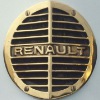
|
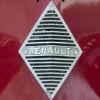
|
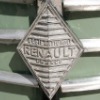
|
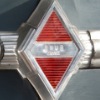
|
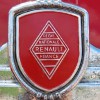
|
|
1923~
|
1925~
|
1946~
|
1946~
|
1950~
|
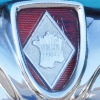
|
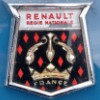
|
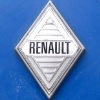
|
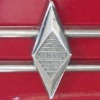
|
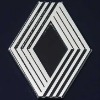
|
|
1951~
|
1956~
|
1959~
|
1965~
|
1972~
|
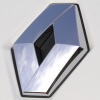
|
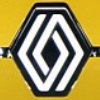
|
|
|
|
|
1992~
|
2021~
|
|
|
|
【 Origin of Emblem and Logo 】
The Renault emblem logo is commonly referred to as the "Renault Diamond". How that the diamond shape is derived to be remains a mystery, though there are three different theories that have been posed over the years. The first theory is that the diamond shape was the most suitable shape to close the hole in the front of the vehicle. The second theory is that the shape is the contour of the tank manufactured by Renault. The third theory is that the shape expresses high quality and dynamism of the products.
【 History of Emblem and Logo 】
In 1900, the Renault's first corporate logo was born, combining the initials of the founder Renault brothers with the Art Nouveau style. In 1906, the emblem logo design was changed to the gear and the racing car that won the first French Grand Prix. Then, the design was changed to the tank FT-17 manufactured by Renault after the end of World War I in 1919. None of these designs were installed on Renault cars.
In 1923, the first Renault emblem logo was adopted for vehicles such as the NN and 40CV. It adopted a round grille design with the name of Renault in the center, which also had the role of passing the sound of the horn out of the hood.
In 1925, the first diamond-shaped emblem logo was born. For about 20 years from here, there has been no noticeable change in the design. Since then, various new designs of Renault diamonds have been adopted at the same time as the launch of new car models.
In 1946, two types of the designs were born for 4CV. In the center of the red was engraved the abbreviation "RNUR" for the company name "Régie Nationaledes Usines Renault".
In 1950, the red shield design was born for Colorale.
In 1951, the design with the French land and diamond inside a red shield was born for Fregate.
In 1956, the design with three dolphins and the crown drawn was born for Dauphine. This design was created by French textile designer Paul Marrot. Unusually, it does not have a diamond shape.
In 1959, the corporate logo design was revised and the car emblem logo design was also changed, and it was adopted for Renault 3 (trois) and Renault 4 (quatre) released in 1961.
In 1962, the thinner diamond design was born for Renault 8 (huit). After that, it has also been adopted by Renault 10 (dix).
In 1972, the new corporate logo was born by French visual artist Victor Vasarely, who specializes in geometric abstraction. The hollowed diamond shape is also followed in modern Renault emblem logo designs. Previously, different designs were adopted for each car model, but they will be integrated into this design. Renault 5 (cinq) became the first model to feature the "new diamond".
Twenty years later, in 1992, the most famous modern Renault diamond was born. The thin parallel lines inside the diamond have been abolished, and the combination of four flat surfaces forms the diamond.
Then, in 2021, a new design emblem logo was announced, and the diamond would be formed again by parallel lines. It is reminiscent of the design that was born in 1972, and is composed of thicker and fewer parallel lines than before. According to Renault's explanation, the entire lineup will be replaced with this design by 2024.
【 History of Company and Brand 】
Renault's history begins in 1898, when Louis Renault climbed the slopes of Montmartre with the three-wheeled vehicle handmade by himself. In 1899, he established "Renault-Frères" with his two older brothers, Marcel Renault and Fernand Renault. The following year, Renault's first corporate logo was born as described above.
In 1903, Renault began manufacturing its own engines and received major volume orders for taxis in London and Paris. It was also used by the French military to transport troops during World War I and was nicknamed "Taxi de la Marne". After that, Renault manufactured not only automobiles but also French tanks, aircraft engines, and aircraft. In 1940, Renault was requisitioned by Nazi Germany, which occupied France during World War II. Renault refused to produce tanks for Nazi Germany and continued to produce trucks instead. In 1942, the Allied air raid burned down the production line, and the founder Louis Renault developed aphasia. When France was liberated in 1944, Louis was arrested for industrial collaboration with Nazi Germany and had the sad ending of being abused and killed in Fresnes Prison. On 1 January 1945, three months after the death of Louis, Renault was nationalized by General de Gaulle's decree. In secrecy during the war, Renault had developed 4CV which was a big success, helping to rebuild Renault after war.
In 1990, Renault was changed status and became a public limited company by the adoption of the law with restrictions on foreign control. Then Renault actually move into the private sector in 1996.
In 1999, Renault decided to form an alliance with Nissan to gain competitiveness in the world. Renault and Nissan have begun to work together as supporting partners while maintaining their identities. In 2016, Mitsubishi joined this alliance.
|
VENTURI
|
【 Origin of Emblem and Logo 】
The Venturi emblem logo depicts a gyrfalcon standing on a hunting glove. The gyrfalcon which raises its wings and forms "V", is the symbol of the power and speed. The hunting glove expresses that humans can control that power and speed. The blue, white and red color are reminiscent of the French flag.
【 History of Emblem, Logo, and Company 】
In 1984, the history of Venturi begins, when MVS (Manufacture de Voitures de Sport) was founded by the French car company Heuliez engineers Claude Poiraud and Gérard Godfroy. The first prototype model "Ventury" was unveiled at the 1984 Paris Motor Show. The last letter of this model name was "y" instead of the familiar "i". This Paris Motor Show was also the catalyst for meeting Hervé Boulan, a businessman and Ferrari enthusiast who would later become a Venturi sales manager. The mass production model was renamed to "Venturi" in 1986, because Hervé Boulan suggested that the name spelling end be changed to "i".
In September 1985, the first emblem logo with the company name "MVS" was born by Gérard Godfroy. The background color of the emblem logo is the red that is the symbol of Pays de la Loire, the birthplace of the brand and company. The red oval is reminiscent of the sun.
In 1989, Xavier de la Chapelle was appointed CEO and the company name was changed from "MVS" to "Venturi". At the same time, the gyrfalcon emblem logo was born.
In 2000, Venturi went bankrupt and was acquired by Monegasque businessman Gildo Pallanca Pastor. The head office was relocated to Monaco. The corporate strategy has also changed significantly, and the company has decided to focus on the electric vehicle business. At the same time, the new V-shaped emblem logo was born. Although a new emblem logo was born, the gyrfalcon continued to be used to remember the glorious past of car racing. The new V-shaped and the gyrfalcon emblem logo are arranged horizontally on the bonnet and bumper.
In 2004, Venturi announced the world's first electric sports car, "Fétish".
|

 English -
English - 